Project findings provide essential insight into the last British–Irish ice sheet
Understanding more about the north-west European continental shelf and improving forecasting for the Antarctic and Greenland ice sheets.
29/09/2022 By BGS Press
A paper marking the culmination of a highly successful project into a former ice sheet is helping researchers to understand more about the north-west European continental shelf. It’s also helping improve forecasting for the Antarctic and Greenland ice sheets.
The five-year, £3.7 million BRITICE-CHRONO consortium, funded by NERC, took on the most ambitious geochronological project yet, encompassing on- and offshore mapping around the UK and Ireland to better describe and understand the growth and decay of the last British–Irish ice sheet.
BRITICE research included 1500 days of field investigation yielding 18 000 km of marine geophysical data, 377 cores of sea-floor sediment and geomorphological and stratigraphical information at over one hundred sites on land. This enabled the generation of 690 new geochronometric ages, which were collected to understand the timings, coverage and retreat of the British–Irish ice sheet and to provide a geochronological framework between 31 000 and 15 000 years ago.
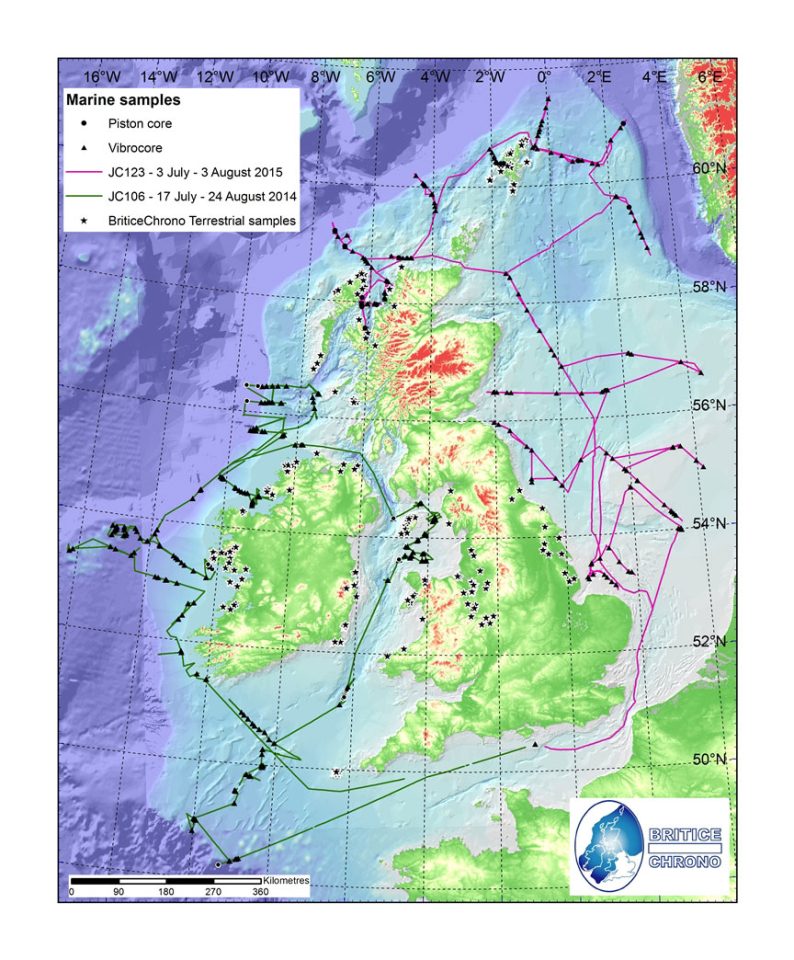
Voyages around a former ice sheet. © BRITICE-CHRONO
The findings bear a strong similarity to the dynamics and evolving configuration in the Antarctic today, enabling scientists to refine and improve current ice sheet modelling approaches. It will also aid researchers investigating regional palaeoenvironments as well as those working on offshore development (e.g. offshore renewables) and marine management.
BGS is proud to have played a role in this important project. The paper compiles and distils many of the detailed findings from the onshore work and offshore transects of the project and will serve as a useful resource to inform and expand on current knowledge on the evolution of the British–Irish ice sheet.
Dayton Dove, BGS Marine Geoscientist.
BGS scientists participated in and contributed to the project by providing expertise, data and information to support planning, implementation and interpretation of survey and project results. The offshore coring was also carried out by BGS engineering teams.
Two reconstructions of the ice sheet were developed: an empirical version and one that combines modelling and the new empirical evidence. Palaeoglaciological maps of ice extent, thickness, velocity and flow geometry at thousand-year time intervals were also produced.
The paper, Growth and retreat of the last British–Irish Ice Sheet, 31 000 to 15 000 years ago: the BRITICE-CHRONO reconstruction, was published in BOREAS.
Relative topics
Related news
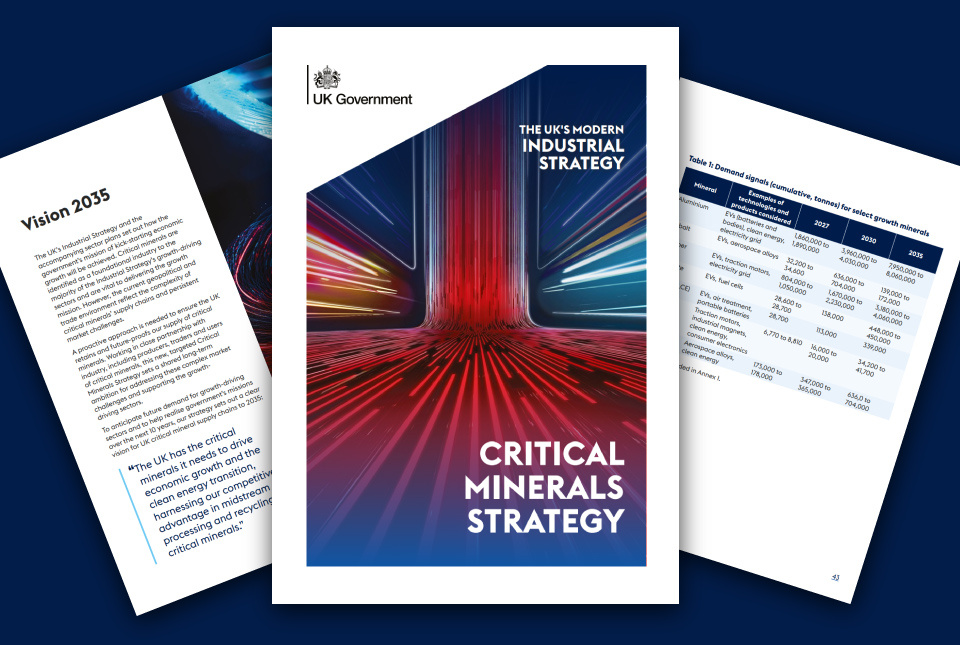
BGS welcomes publication of the UK Critical Minerals Strategy
23/11/2025
A clear strategic vision for the UK is crucial to secure the country’s long-term critical mineral supply chains and drive forward the Government’s economic growth agenda.

New funding awarded for UK geological storage research
21/11/2025
A project that aims to investigate the UK’s subsurface resource to support net zero has been awarded funding and is due to begin its research.

UK braced for what could be the largest solar storm in over two decades
12/11/2025
Intense geomagnetic activity could disrupt technology such as communication systems, global positioning systems and satellite orbits.

First distributed acoustic sensing survey completed at UK Geoenergy Observatory
12/11/2025
New research at the Cheshire Observatory has shown the potential for mapping thermal changes in the subsurface using sound waves.

Latest BGS Geology 50K mapping data launched
06/11/2025
Some of our most widely used maps have received a major update, including the 1:50 000-scale map series that now includes enhanced coverage of Great Britain.

New research highlights significant earthquake potential in Indonesia’s capital city
04/11/2025
Research reveals that a fault cutting through the subsurface of Jakarta could generate a damaging earthquake of high magnitude.

World Cities Day: the geological story of our cities
31/10/2025
Understanding the rocks that underlie our towns and cities, the risks they can present and how they influence urban planning and redevelopment.

GSNI project wins multiple awards at RegioStars event
17/10/2025
The AGEO project enjoyed a double success at the RegioStars awards, hosted at the European Commission in Brussels.
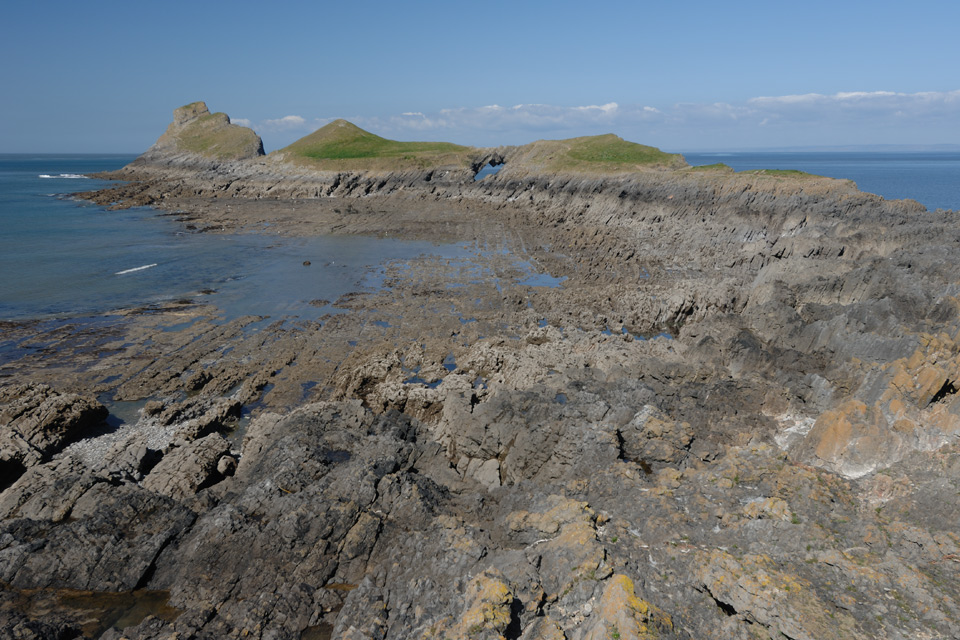
Extended seabed geology map of the Bristol Channel published
07/10/2025
BGS has released significantly extended high-resolution maps that will support offshore green-energy initiatives in the area.

Dr Angela Lamb appointed as honorary professor by the University of Nottingham
02/10/2025
Dr Lamb will take up the position of honorary professor of environmental geochemistry, with a focus on collaborative research.
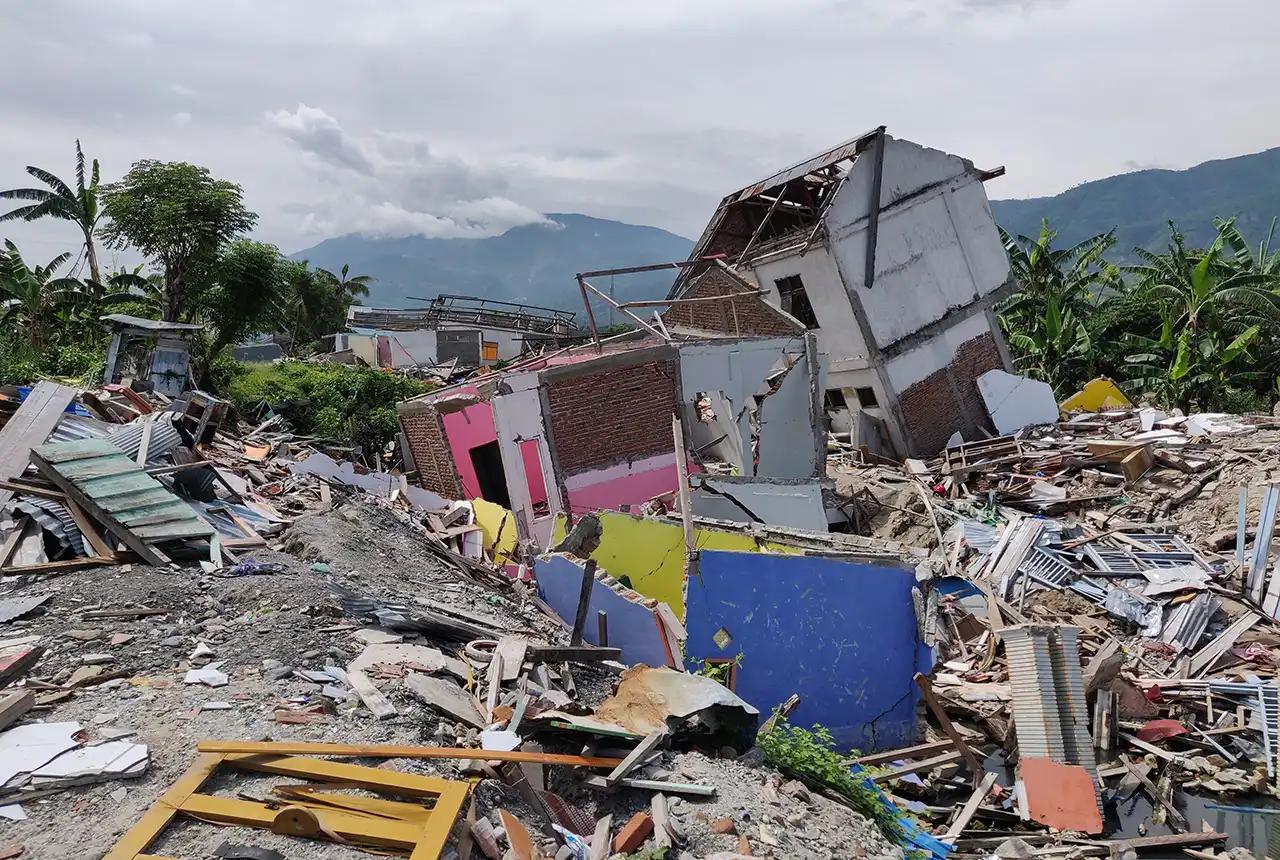
New report sets pathway to reduce the impacts of geohazards in one of the world’s most hazard-prone nations
30/09/2025
A new White Paper, co-developed by Indonesian and UK hazard experts, presents a strategic roadmap to significantly reduce the impacts of geological hazards in Indonesia.
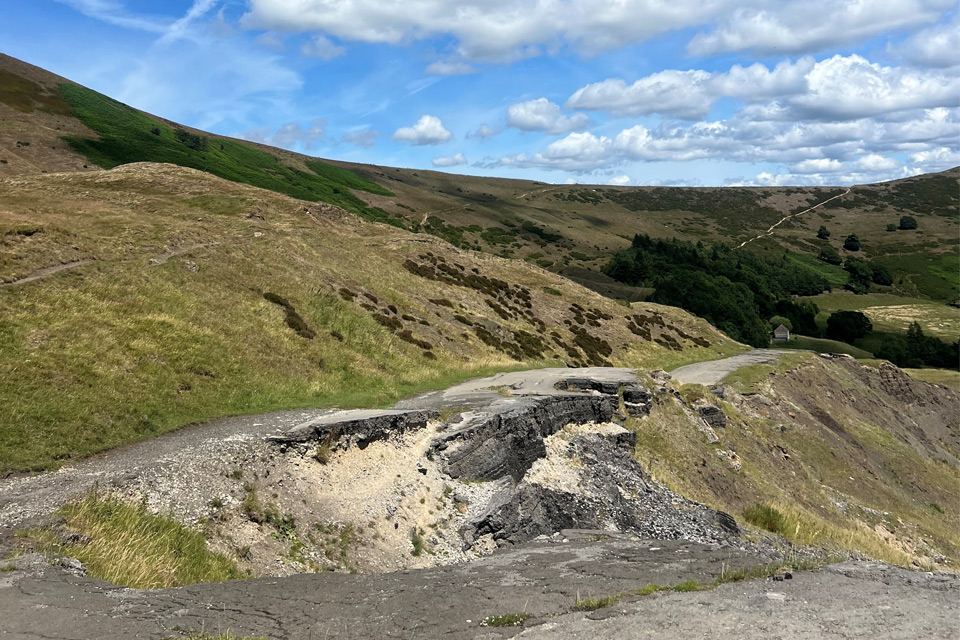
Artificial intelligence helps scientists identify 3000 moving slopes potentially at risk of landslide
25/09/2025
A new approach that combines AI and satellite data has been used by scientists to detect actively moving landslides at a national scale.




